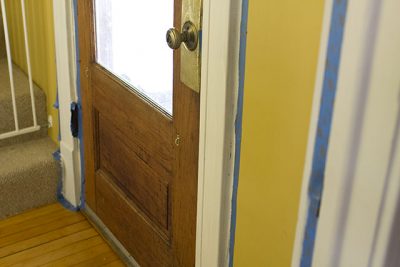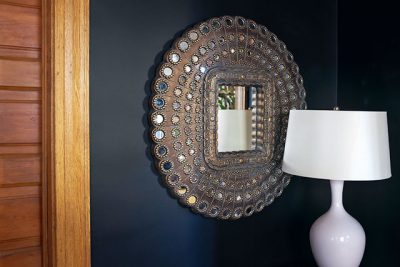I put up my almost Hang-it-All in the basement stairwell yesterday. To make sure it would stay put, I needed to be sure I hit the studs in the wall.
If you ever want to hang something heavy in your home, you’ll want to know how to find the studs too. I thought it might be helpful to show you a few methods for finding them: using an electronic stud finder*, knocking and listening, or swiss cheesing your walls. Can you guess which method you probably want to avoid?
* This is the stud sensor I use. We bought it years ago. It’s more expensive than most, but I’ve used cheaper models and have found that this one is worth the price.




17 comments
Kelsey
My husband prefers the swiss cheese method, right at eye level… drives me INSANE!
erin
Awesome! Another easy way to find a stud: find an outlet or wall stitch and remove the faceplate to see which side of the box the stud is on, because electrical boxes for switches and outlets are always mounted onto studs. Then measure out from the edge of the stud 14 1/2″ (going away from the stud) or 16″ (going over the stud) to find the edge of the next one. Studs are 1 1/2″ wide and set 16″ on center (14 1/2″ apart) so that will always find you a stud. :)
Sarah vL
Thank you for making this!! I had no idea that, 1) you had to wait until it beeped to start moving, and 2) that the ‘stud beep’ meant it was at the EDGE of a stud and that you had to go to the other side to track it!! Super informative – thank you. :)
Making it Lovely
That’s a common mistake. Glad I was able to help!
tracy
I always chase my husband around the house with the stud finder. The joke never gets old!
Thanks for the video, Nicole! I hope you do more in the future. So helpful!
Making it Lovely
Ha! I told Brandon I’d just turn it in his direction. *beep!*
Ms. May
We had the damnedest time trying to find the studs in our lathe and plaster walls, and finally came across the magnet method: you use super strong magnets (those tiny silver ones, we found ours at the hardware store) and run them over the wall until you feel a tug. They are drawn to the nails used to attach the lathe to the studs, so wherever you feel a tug there’s a stud. Worked beautifully! I also recommend using screws in plaster walls rather than nails if you have lower-quality plaster (like we do) that tends to crack and chip with hammering.
Making it Lovely
Great tip, I’ve not heard about using magnets! I would worry about relying on them for standard drywall though — you might find yourself nailing into pipes.
Ms. May
Gah, totally. That would be not as productive as desired, huh?
San Diego Mobile Notary
Wow! Great video, straight to the point and very helpful. Thanks!
jbhat
Is your stud finder PINK??
: )
You are so slim!!
jbhat
shortsweetseason
I love this short and to the point video.
Molly @thewaffler.com
Thanks for the helpful video. In the past I’ve used a tiny (non-electrical) stud finder where the little doohickey is supposed to move when it’s near the stud. The problem is it seems to move no matter where I put it! I think it’s time to upgrade to an electrical one like yours. Do you have a recommendation?
Making it Lovely
I linked to the one I have above. It’s from Black and Decker.
Comments are closed.